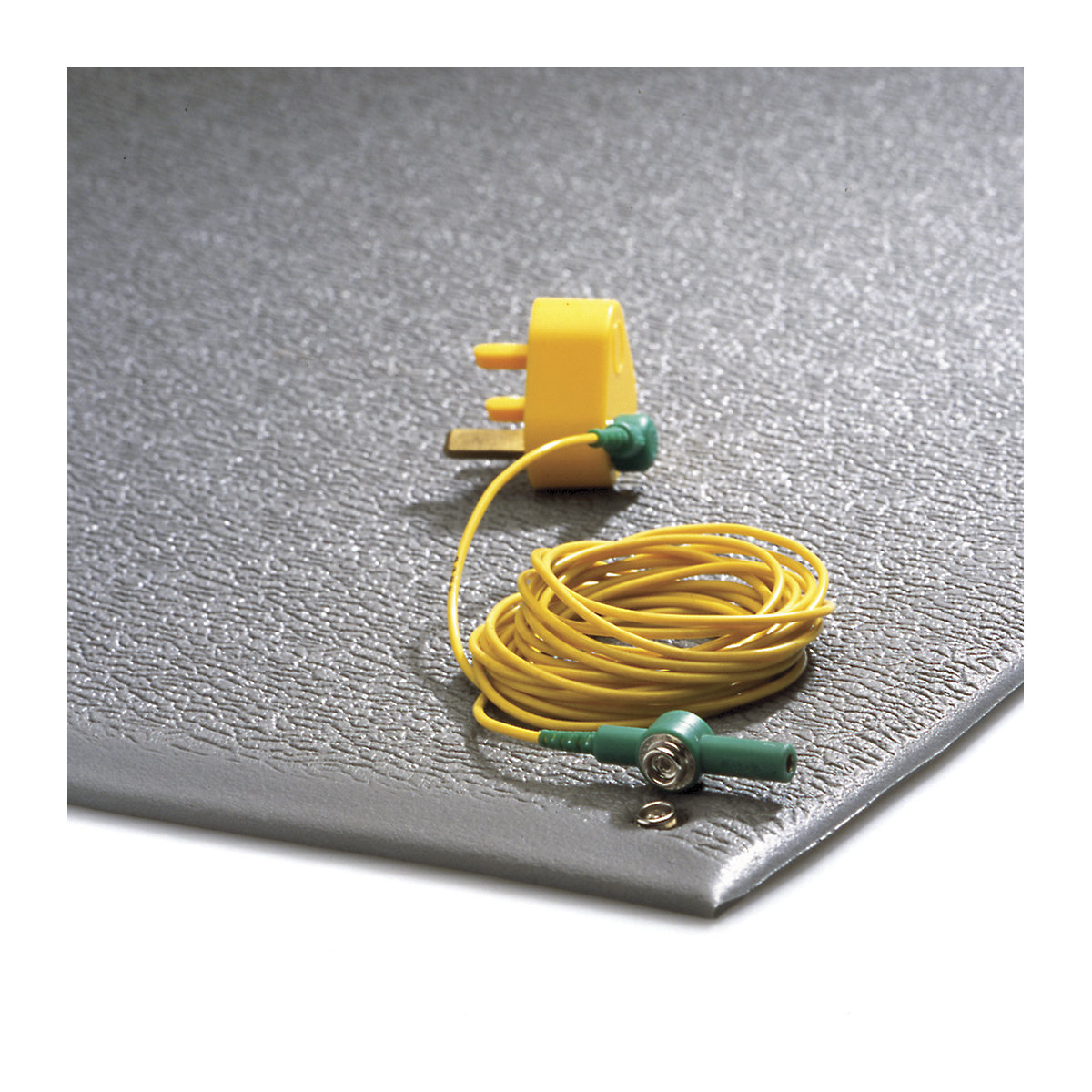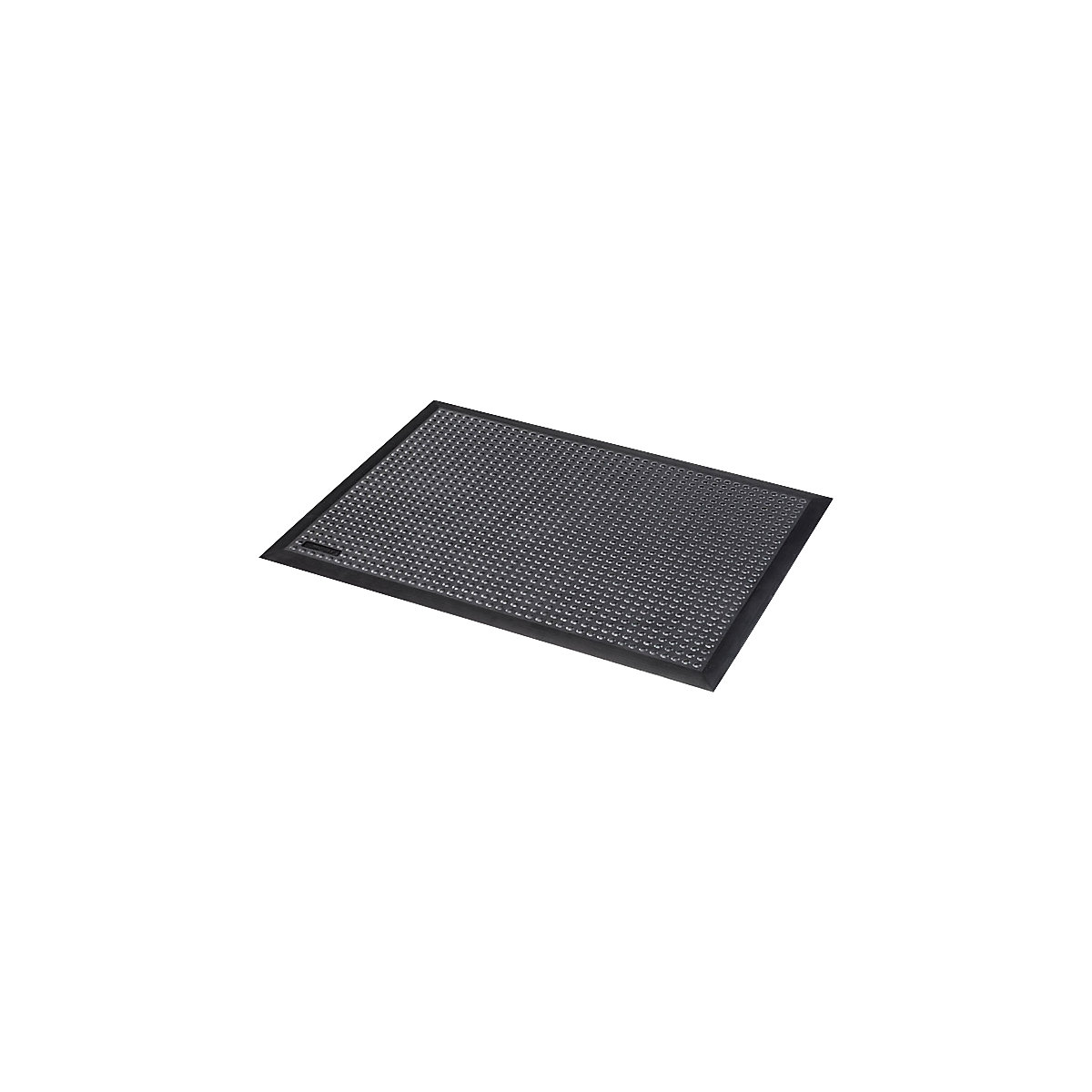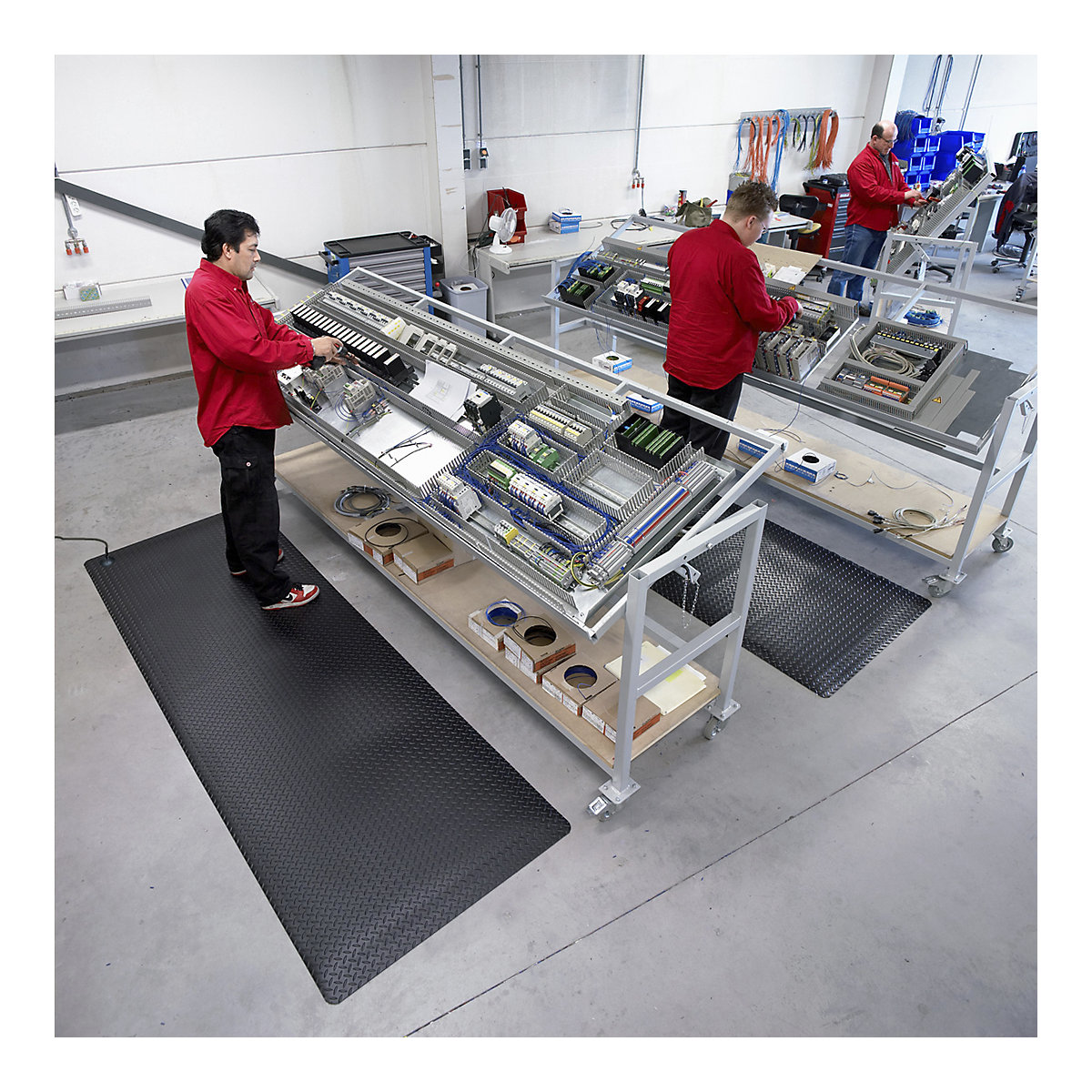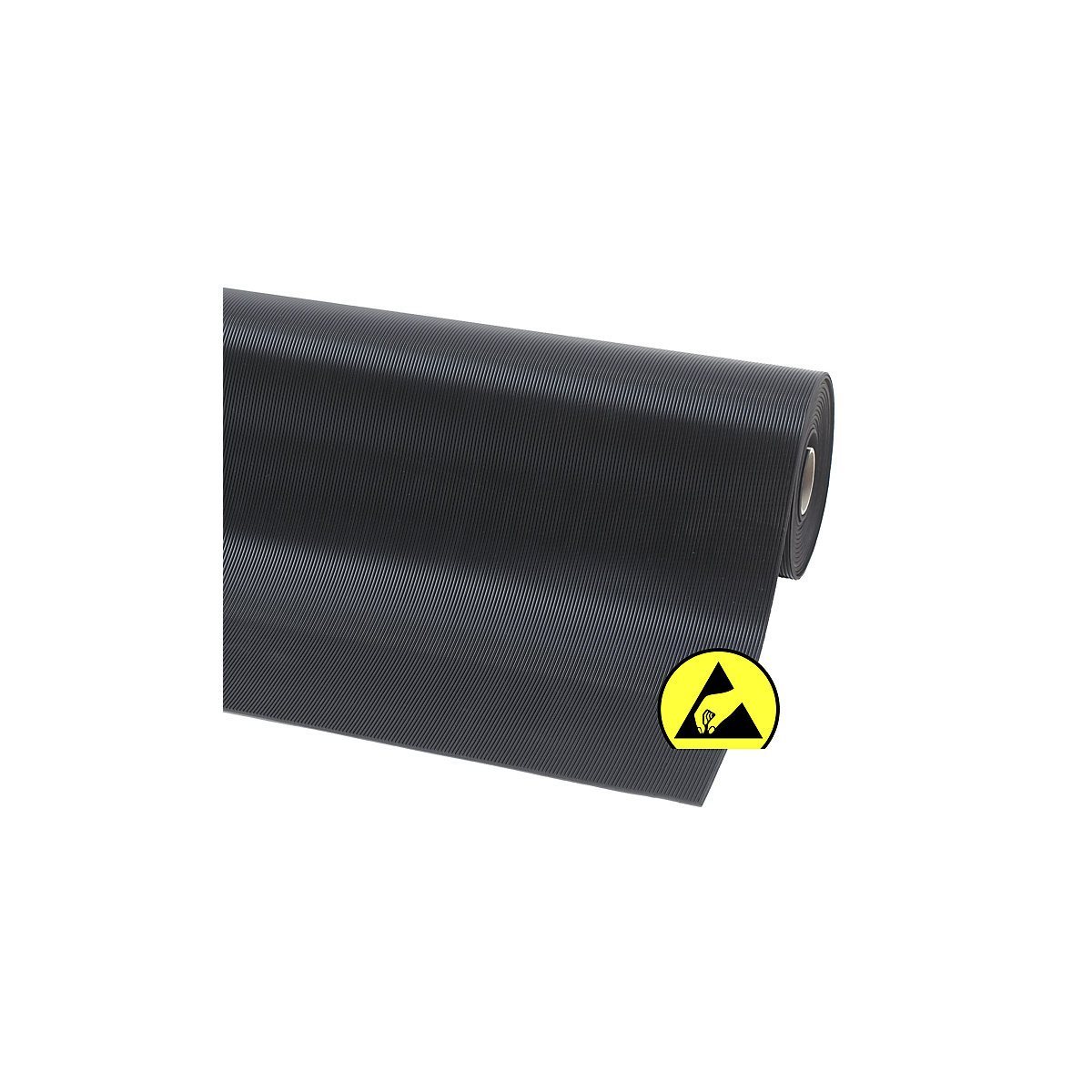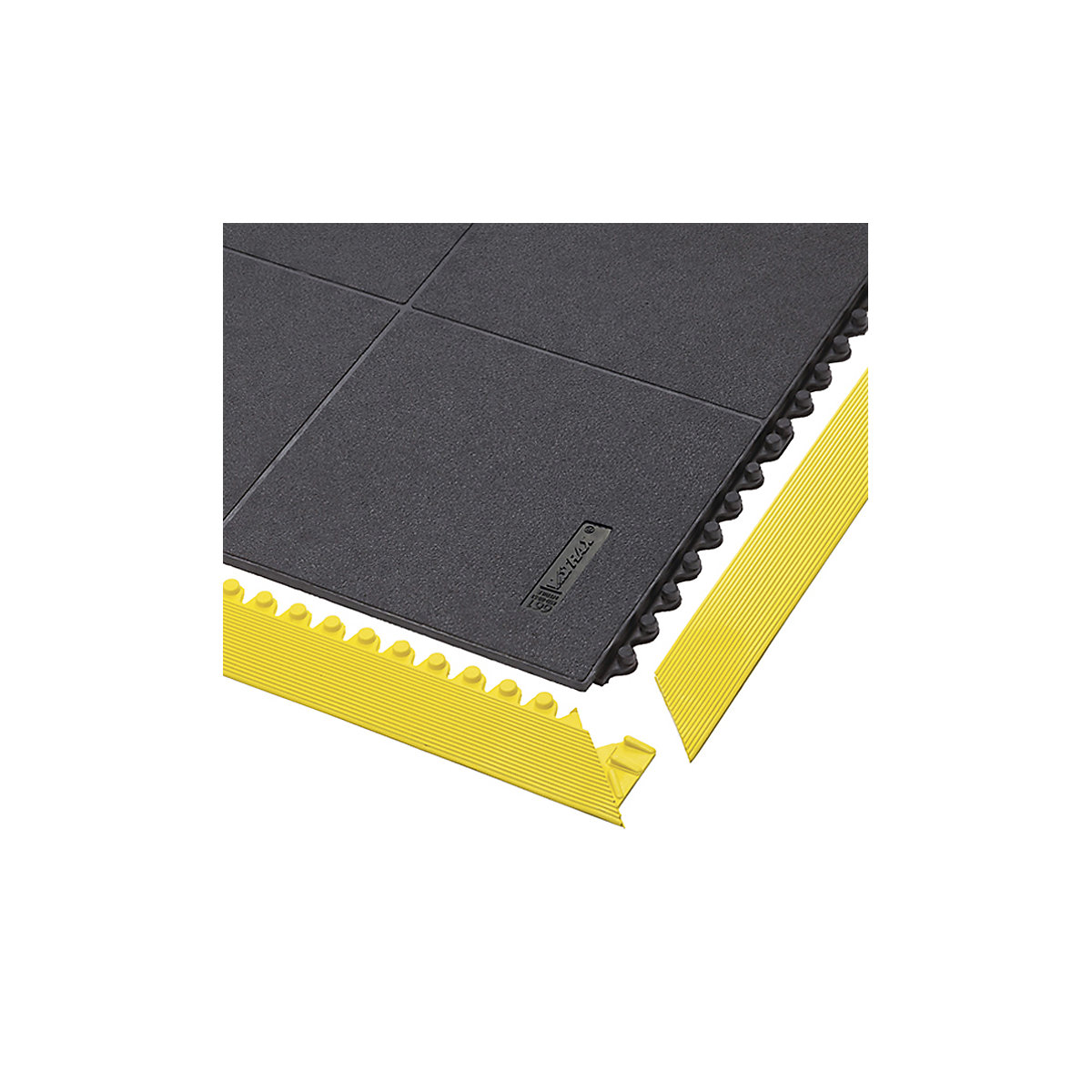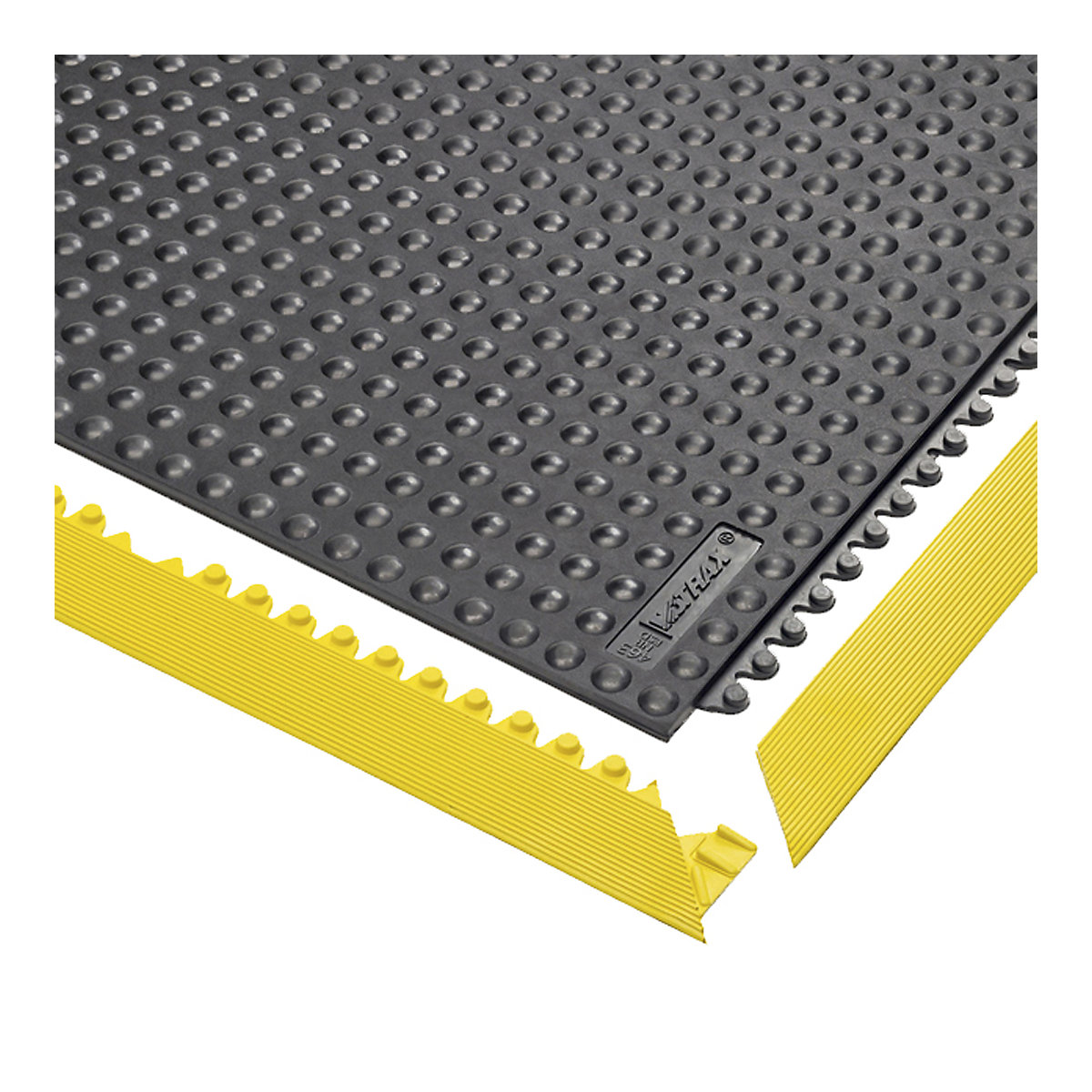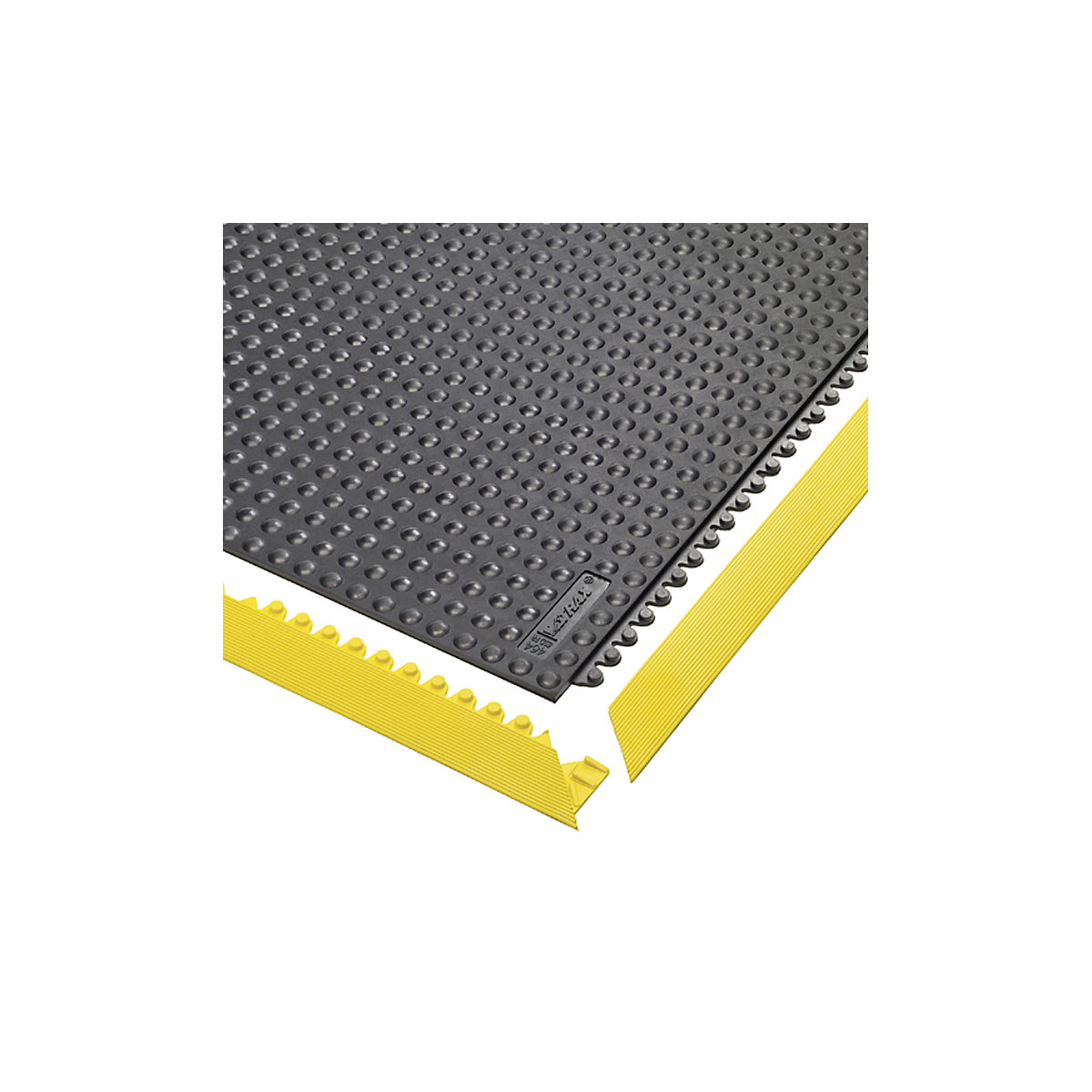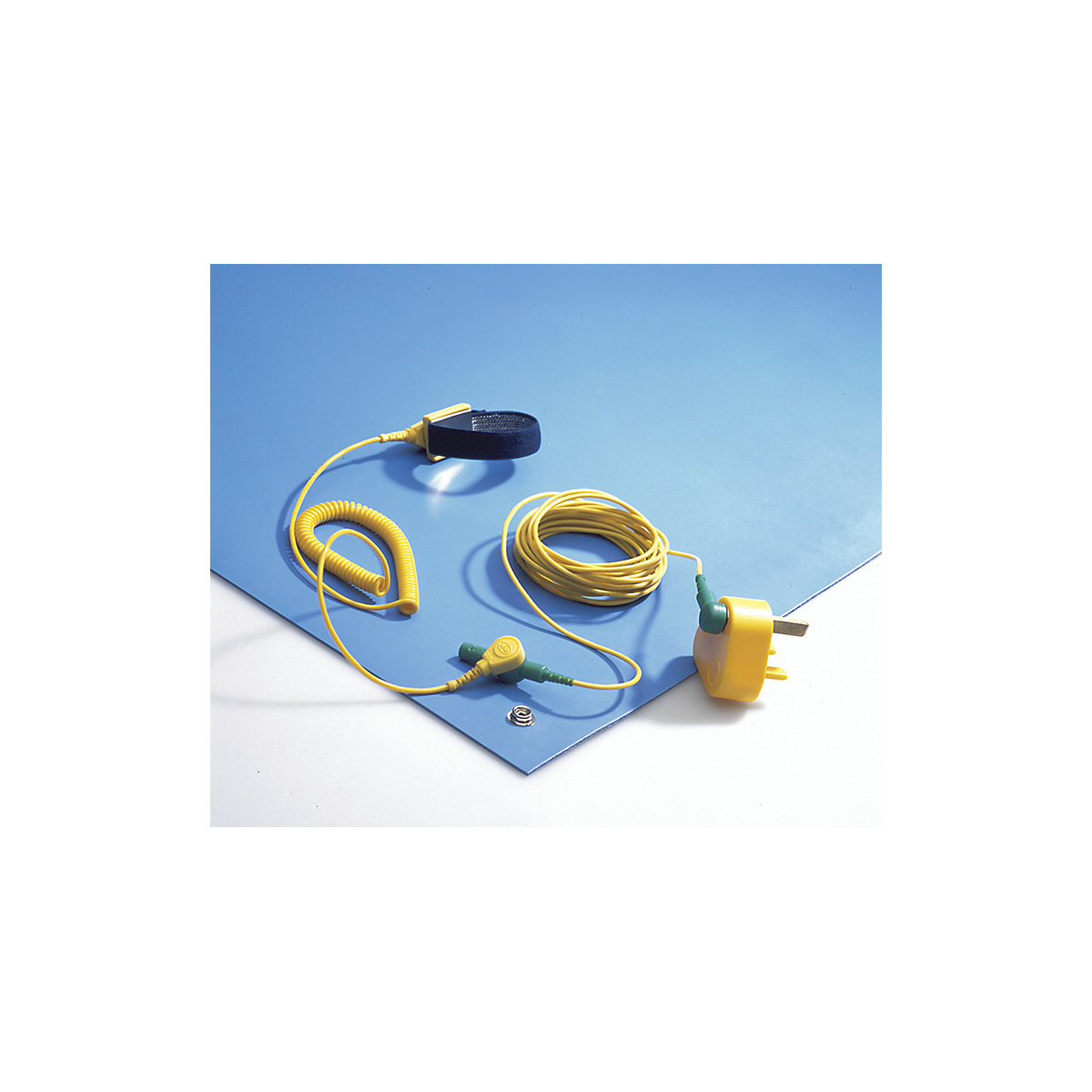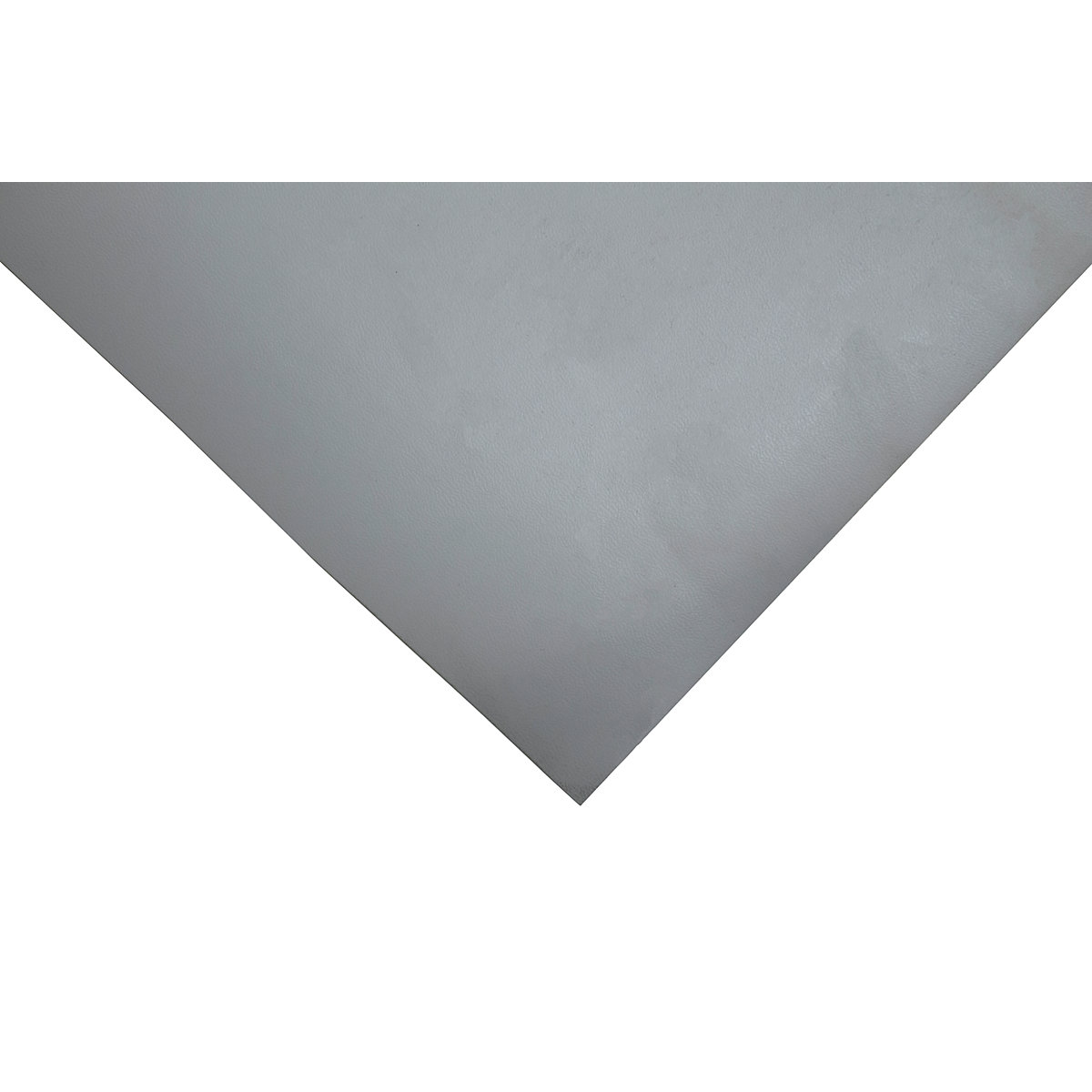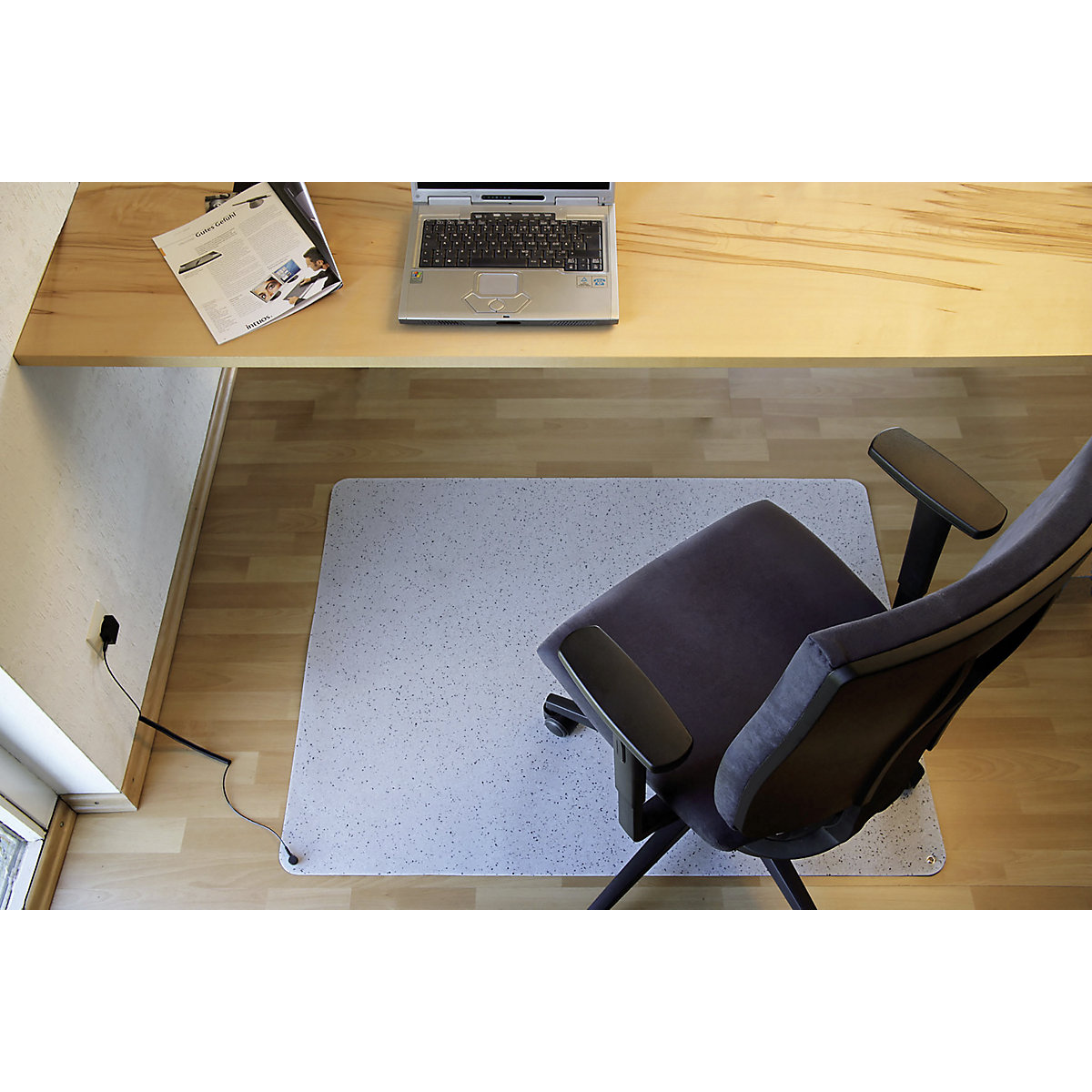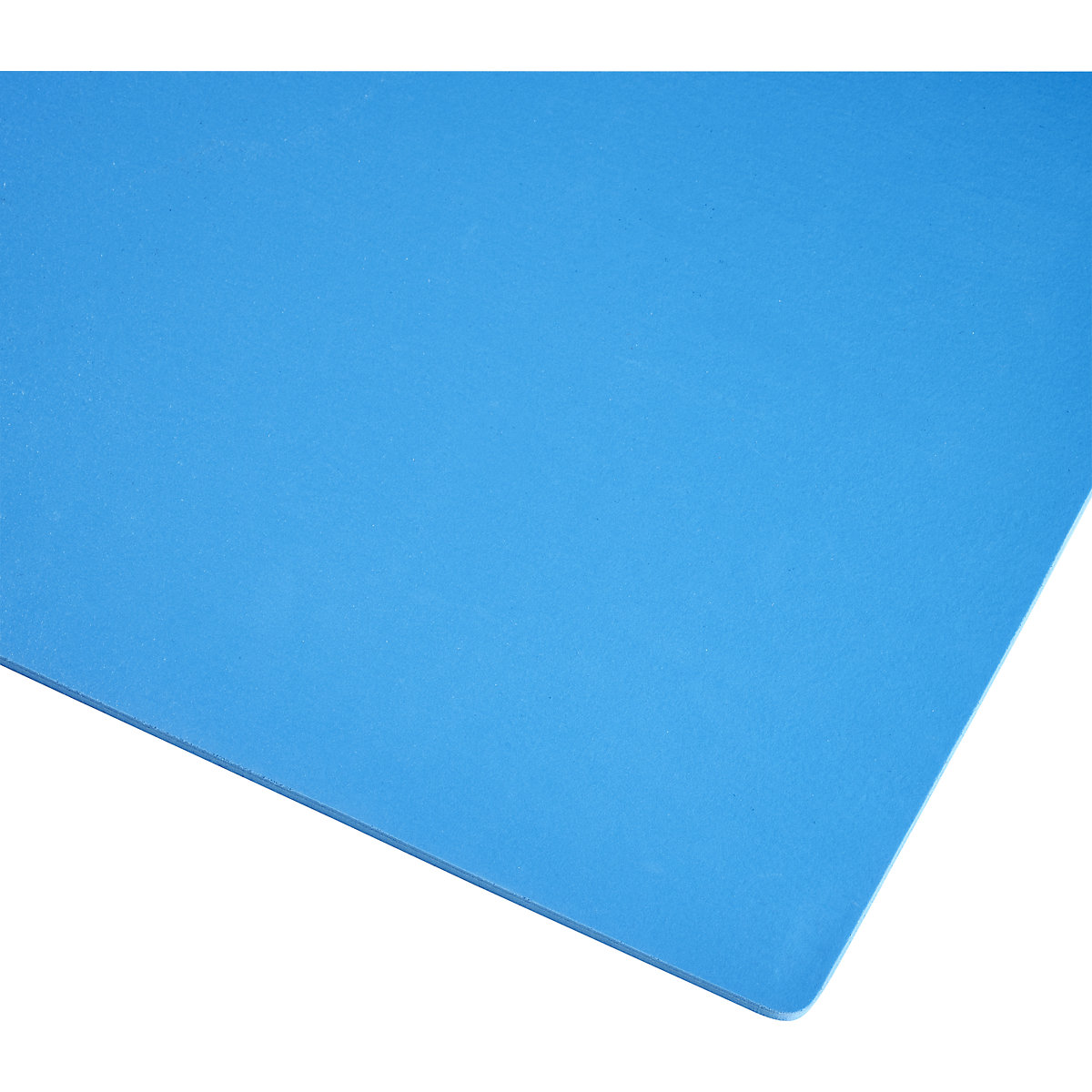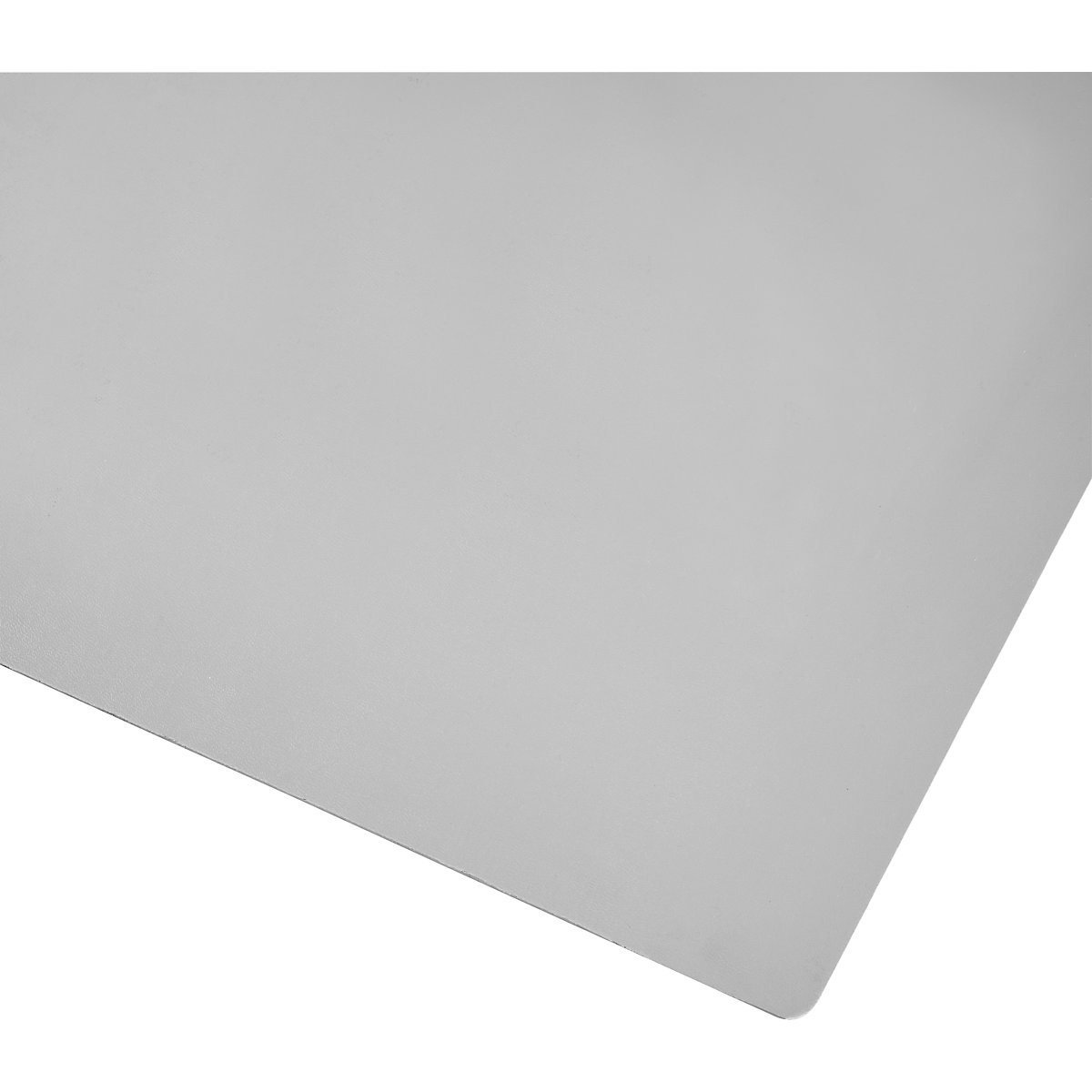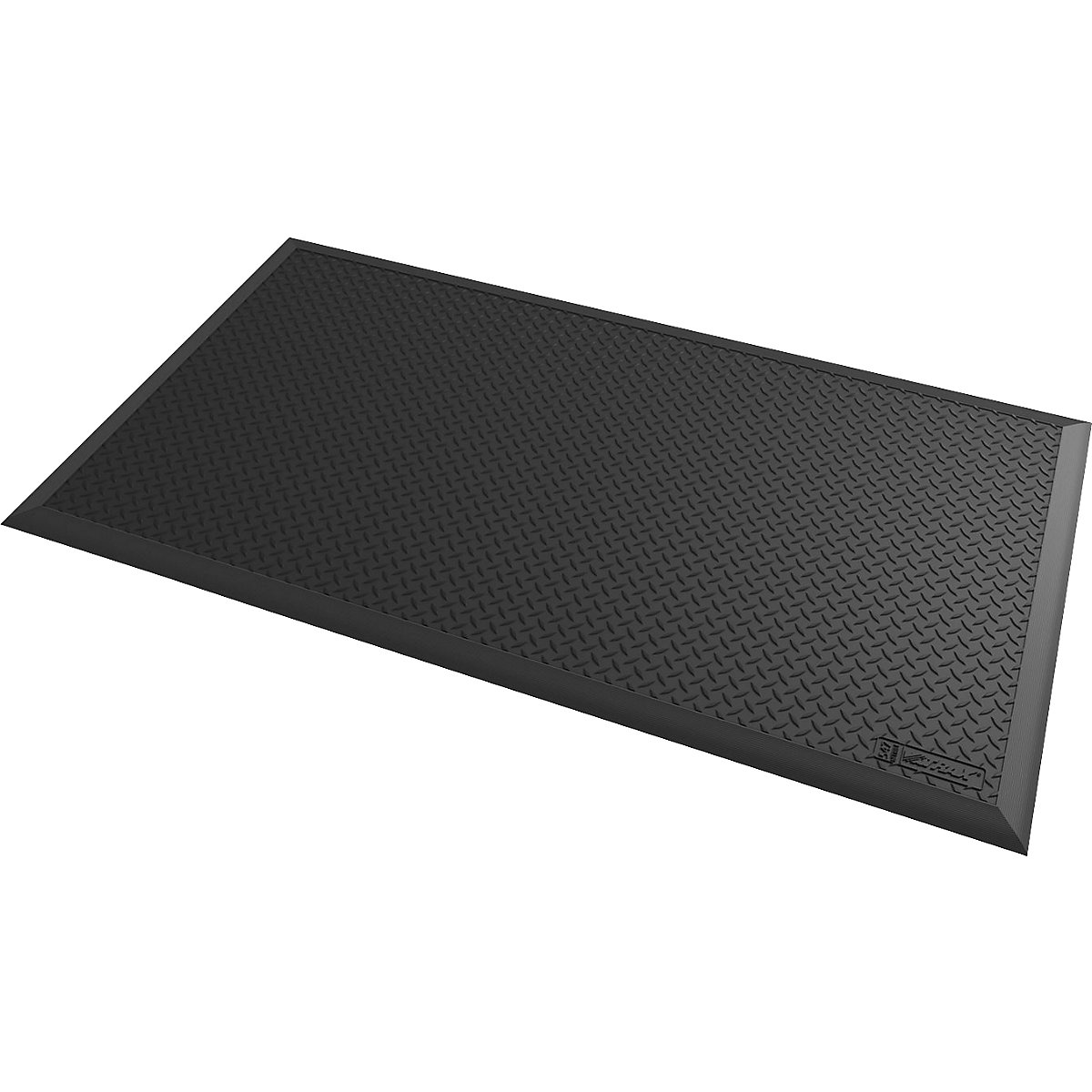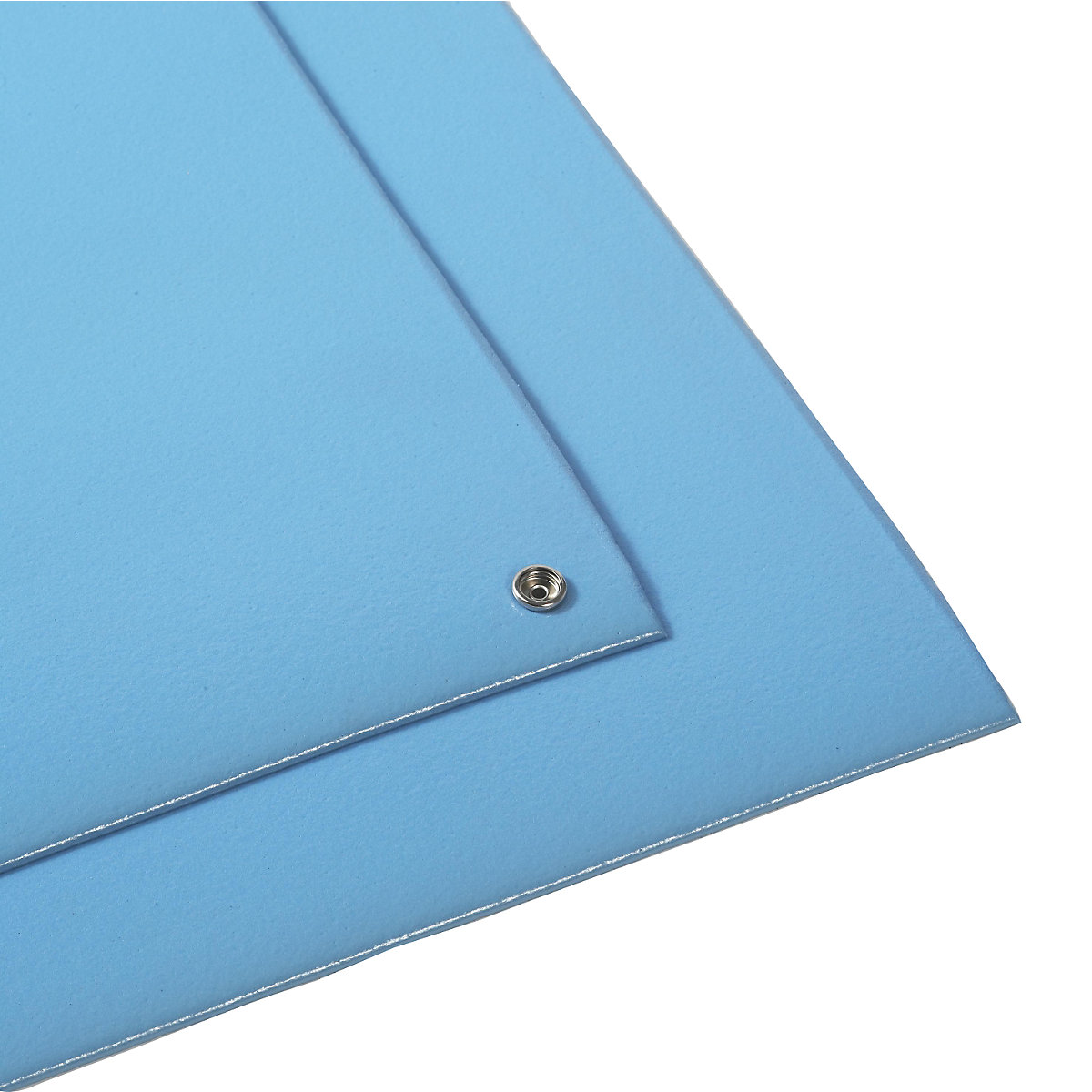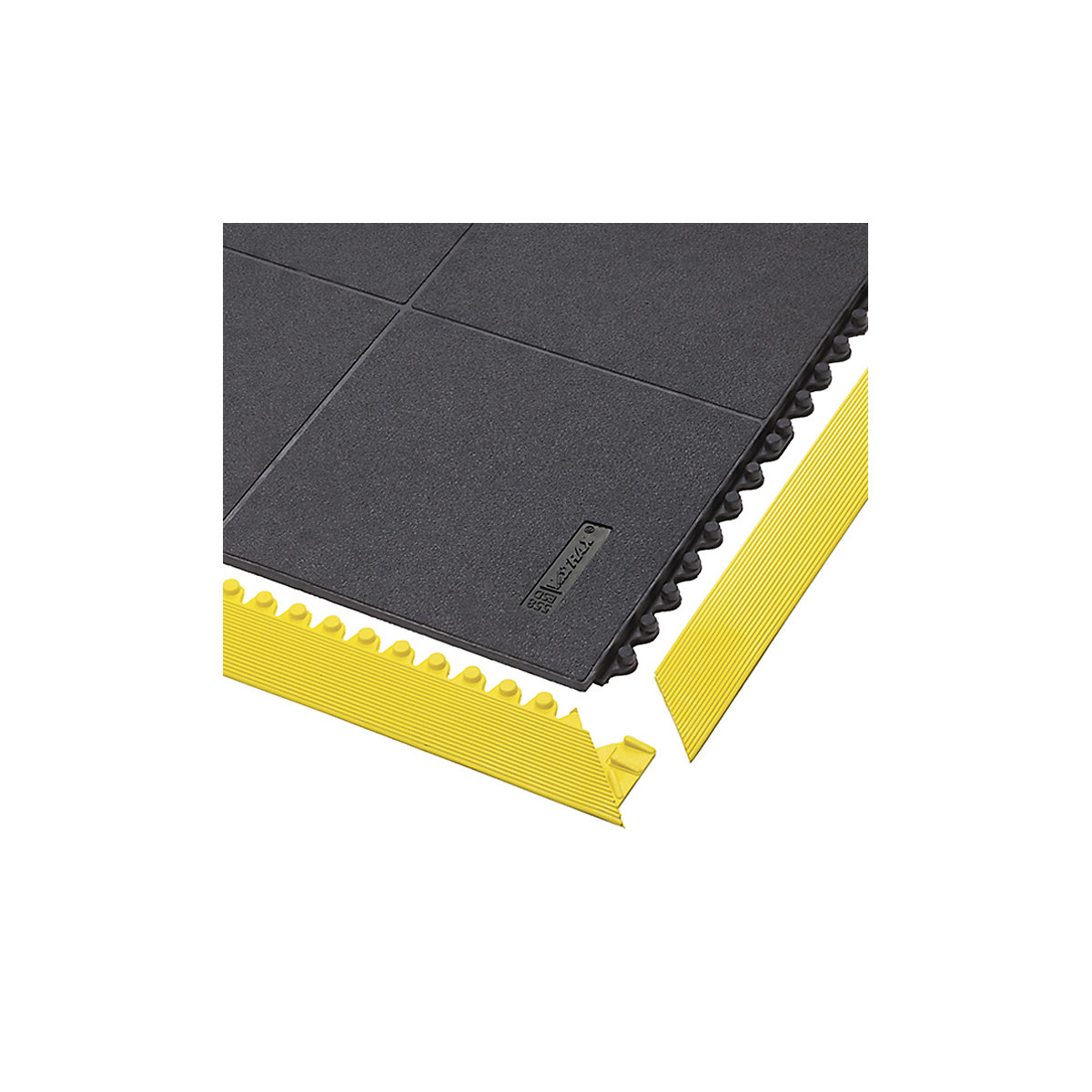ESD floor coverings
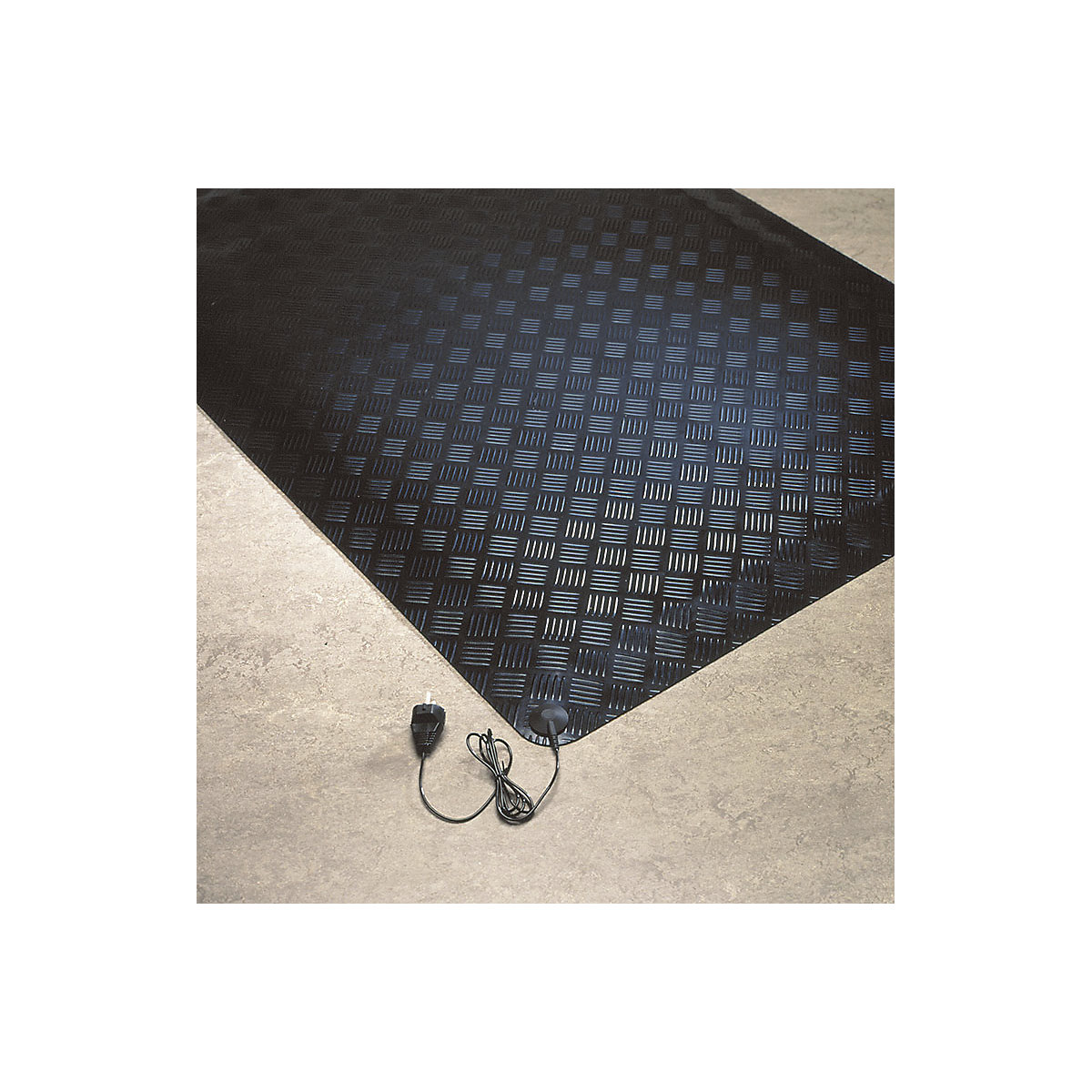

ESD floor coverings – literally the foundation for every EPA
Anyone who works with sensitive electronic components has little use for electrostatic discharge. That's why ESD floor coverings are mandatory standard equipment in every EPA (electrostatic protected area). While not actually their key purpose, these ESD protection measures also make a contribution to employee health. Ingenious, don't you think?
How does a conductive floor covering work?
An ESD floor covering, as they are known, is an important element of the ESD workstation. It protects the entire area and prevents uncontrolled electrostatic discharges due to personnel or furnishings. This is exactly what is, after all, crucial when handling sensitive electronic components in electrical engineering or in the laboratory.
The ESD protective matting equalises the charge by conducting it to an earthing point in a controlled manner. To perform this function, this key element of your ESD protective measures features a conductive structure and an earth conductor. ESD protective matting is not only available as ESD flooring, but also as antistatic table matting. In addition, there is ESD matting with an anti-fatigue effect for employees who spend long periods standing, and matting with a high resistance to chemicals.
When do you need which ESD floor covering?
Generally, a distinction is made between conductive and dissipative flooring. If the resistance is a maximum of 10⁶ Ω, it is considered conductive. At a maximum of 10⁹ Ω, it is called dissipative. Dissipative floor coverings, together with ESD chairs and desks, ESD shelving systems and ESD work clothing, provide the most effective protection against discharges.
In addition, selecting suitable products not only involves looking at them in terms of dissipation, but also in terms of chemical resistance, anti-slip resistance and flammability. The specific properties that the product should exhibit will depend on the general protection regulations and the liquids or equipment used in your company.
What regulations are there in relation to ESD protective matting?
ESD protective matting must comply with EN 14041 and EN 61340 on the electrostatic properties of floor coverings.
The specifications not only define the limit values for the contact resistance and therefore the level of protection provided. They also contain information on correct installation, the use of conductive adhesives, and how to combine ESD protective measures with hygiene and maintenance requirements.
What other recommendations beyond the legal requirements are there?
Anti-static floor matting or anti-static desk matting only does half the job when suitable ESD accessories aren't available. You should always have ESD wrist straps for your employees at hand. In addition, ESD workplace matting is nothing more than anti-slip matting and a protective pad for furniture or surfaces if there are no earth conductors. Finally, ESD protection is a task that extended from A to Z, and you can ensure exhaustive protection with, for example, ESD storage bins or ESD transport equipment.
Would you like to know more about it? Then take a look at our product guide ESD: Protection from damaging discharges.


